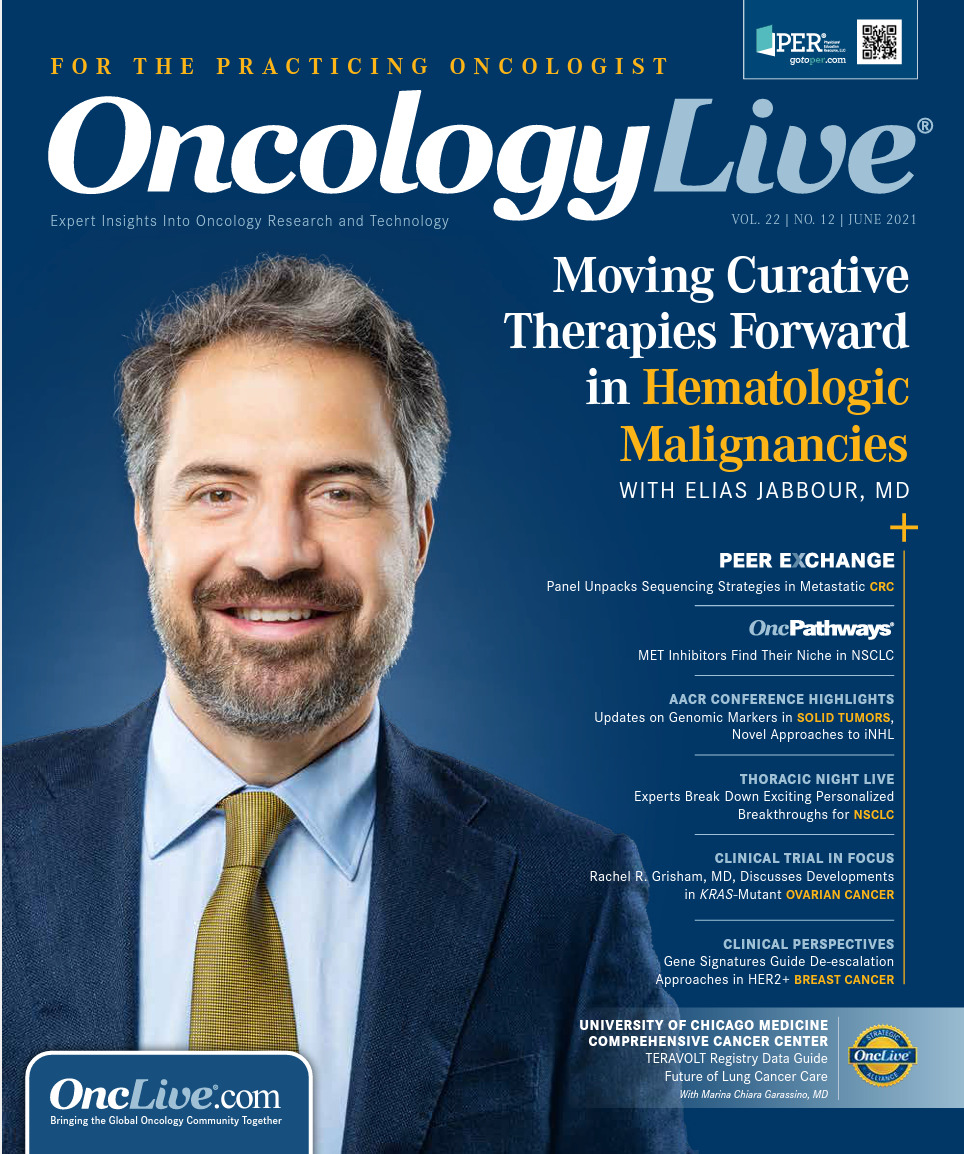Publication
Article
Oncology Live®
Garassino Highlights What’s In Store for Lung Cancer
Author(s):
Patients with lung cancer were identified as an at-risk group for developing severe complications as a result of SARS-CoV-2 infection, and thoracic oncologists were fast to respond with the establishment of the Thoracic Cancers International COVID-19 Collaboration.
Marina Chiara Garassino, MD

The past year presented opportunities for innovative and collaborative change across the spectrum of oncology care, as investigators and institutions worked to adapt practice during the COVID-19 pandemic. Patients with lung cancer were identified as an at-risk group for developing severe complications as a result of SARS-CoV-2 infection, and thoracic oncologists were fast to respond with the establishment of the Thoracic Cancers International COVID-19 Collaboration (TERAVOLT). The global registry collected characteristics and outcomes of patients with thoracic cancers affected by COVID-19, providing oncologists with a database of knowledge for the treatment of similar cases in their clinics.
Data from the registry showed a 34.6% death rate (n = 66/191), with 52 (79%) deaths attributed to complications from COVID-19 only and 7 (11%) as cancer progression only. Further, 3 (5%) deaths were due to complications from COVID-19 and cancer progression.1
Marina Chiara Garassino, MD, chief investigator of research for TERAVOLT, spoke with OncologyLive® about stepping up to meet this unprecedented challenge in thoracic oncology.
Garassino, formerly with the Fondazione IRCCS Istituto Nazionale dei Tumori in Milan, Italy, and now a professor in the Department of Medicine, Section of Hematology/Oncology, at the University of Chicago Medicine in Illinois, also discussed the revolution in lung cancer treatment, the COVID-19 pandemic, and what 2021 holds for the field.
In the past decade, patients with lung cancer have benefitted from several new treatment avenues, including immunotherapy and targeted treatments. Where does the field stand now?
Throughout my career, I’ve been a part of many studies that have advanced the field, including the identification of patients who are good candidates for targeted-agent therapies for genetic alterations. I was an investigator on 2 trials–CheckMate 017 [NCT01642004] and CheckMate057 [NCT01673867]–the results of which showed for the first time the effectiveness of immunotherapy [in non–small cell lung cancer]. Additionally, results of the KEYNOTE-189 trial [NCT02578680] showed that immunotherapy and chemotherapy together were superior to chemotherapy alone.
Now oncologists have multiple avenues to treat patients with lung cancer, including targeted therapies for many patients who have never smoked and chemotherapy combined with immunotherapy for patients without targetable alterations. Survival rates have increased, and many patients live several years.
That said, the next big unmet need is figuring out how to overcome resistance to these therapies. To treat patients with lung cancer, it is important to have multidisciplinary teams like we have at UChicago Medicine, where specialists in different fields share the best treatment strategies for every single patient.
COVID-19 has been particularly tough on patients with lung cancer, and you made headlines in 2020 with the TERAVOLT registry. Can you expand on how the registry came to be?
When the pandemic began, I was in Milan. The city was totally unprepared, and we were hit really hard. I sent an email to all my friends in the field around the globe saying that they needed to be prepared, because the virus would spread everywhere. I said we needed to collect data to help cancer patients. In 1 week, we were able to write the protocol, get IRB [institutional review board] approval, and share the protocol with 220 centers around the world. We were able to present our f irst data within a month, which showed that patients with thoracic cancer with COVID-19 had a 32% mortality rate, higher than other patients with cancer. The community of oncologists came together and ultimately collected data on more than 1500 patients. This information helped us continue to treat our patients during the pandemic. We were also able to demonstrate that immunotherapy and targeted treatments did not worsen infections.
What does the TERAVOLT research mean for patients with thoracic cancer in 2021?
We issued a call to action to the World Health Organization and other agencies to advocate for early vaccinations for patients with thoracic malignancies. [The information will also allow us to] better treat these patients if they do get COVID-19. It was a wonderful academic effort and incredible opportunity, and now we are working on the final paper of our results.
What does 2021 hold for the future of lung cancer research?
This is a transition year. Of course, we want the survival rate to be 100% and we don’t want patients to become resistant to therapies. Several things are at the forefront now.
The research will focus on putting the treatments in the correct sequence. Another big [area of] development this year will be in neoadjuvant therapy. We are going to continue to find more targeted agents to overcome this resistance. Cancer metabolism will play a big role.
For immunotherapies, we will not just target T cells, but also macrophages and other components of the immune system. Also, vaccines and cellular therapies are now emerging. Patients must be aware of the multiple possibilities to treat lung cancer, and they must be active in selecting the right treatments based on their desires and needs.
You recently moved to University of Chicago Medicine. How will that affect your research?
I’m excited to be a part of the University of Chicago Medicine Comprehensive Cancer Center. I love the diversity and the tradition of research and innovation. I’m looking forward to working with colleagues in different fields. I’m interested in the idea of immune metabolism to shape and create the best condition for immunotherapy. I’m also looking forward to doing more research in artificial intelligence to improve early diagnosis and personalized medicine.
When I first started in this field, my friends told me I was treating a dreadful disease because many of my patients died. But throughout my career, I have seen a revolution in treatments. I see patients living longer. It’s been incredible to dedicate my life to this.
Reference
- Garassino MC, Whisenant JG, Huang LC, et al; TERAVOLT Investigators. COVID-19 in patients with thoracic malignancies (TERAVOLT): first results of an international, registry-based, cohort study. Lancet Oncol. 2020;21(7):914-922. doi:10.1016/S1470-2045(20)30314-4




























%20(2)%201-Recovered-Recovered-Recovered-Recovered-Recovered-Recovered-Recovered-Recovered-Recovered-Recovered-Recovered-Recovered-Recovered-Recovered-Recovered-Recovered-Recovered.jpg?fit=crop&auto=format)
%20(2)%201-Recovered-Recovered-Recovered-Recovered-Recovered-Recovered-Recovered-Recovered-Recovered-Recovered-Recovered-Recovered-Recovered-Recovered-Recovered-Recovered-Recovered.jpg?fit=crop&auto=format)
